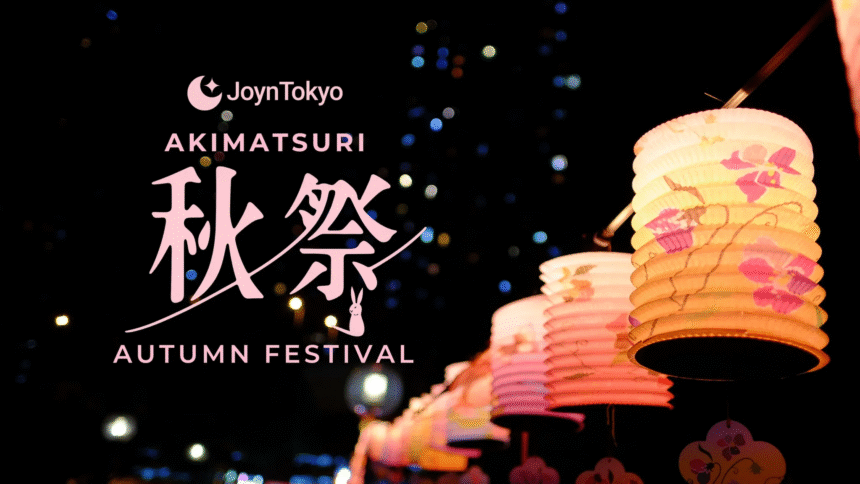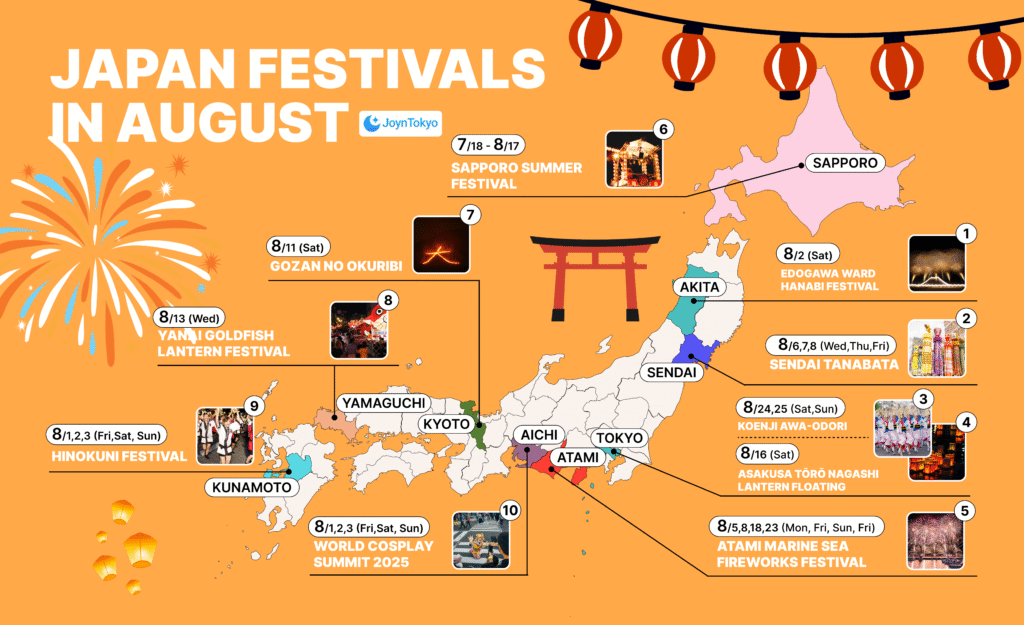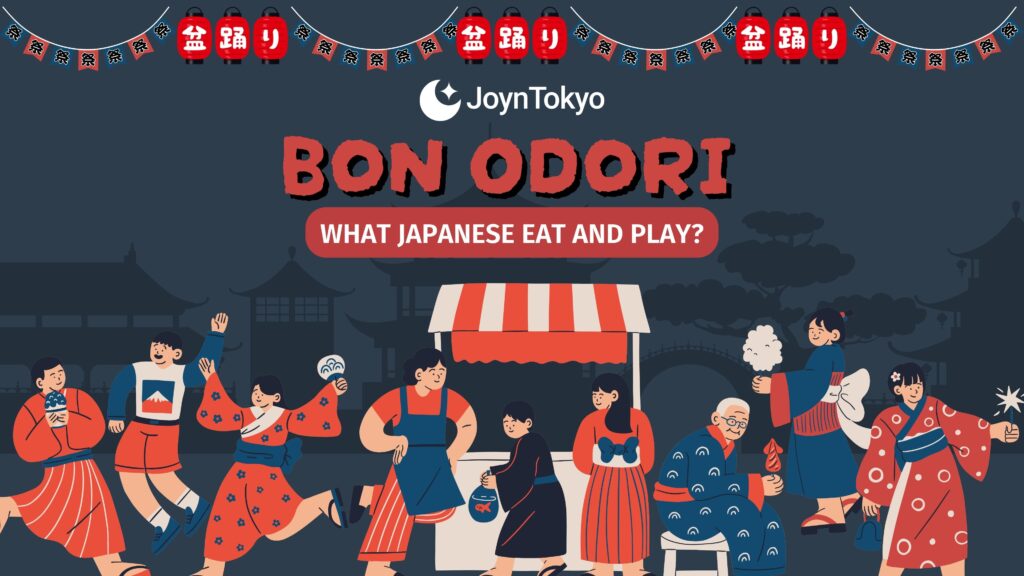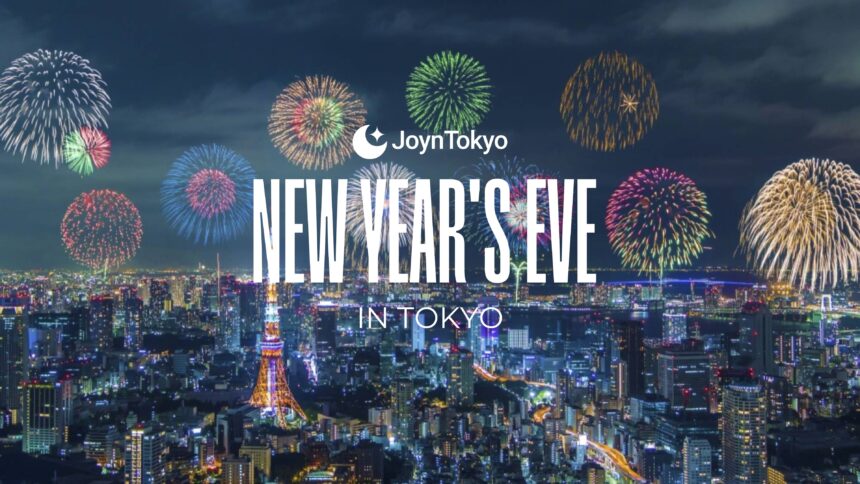Fall in Japan offers travellers something the hot and humid summer festivals cannot: cool evenings, lantern-lit streets, and a cultural deep dive that gives you the perfect feeling after the scorching summer but before the winter chill. Whether you are planning a first trip or hunting for a reason to return, Autumn Festivals, known in Japan as Akimatsuri, give you six perfectly spaced weekends to taste regional traditions at their most photogenic. So let’s take a look through some of 2025’s most anticipated festivals!
2025 Akimatsuri Calendar
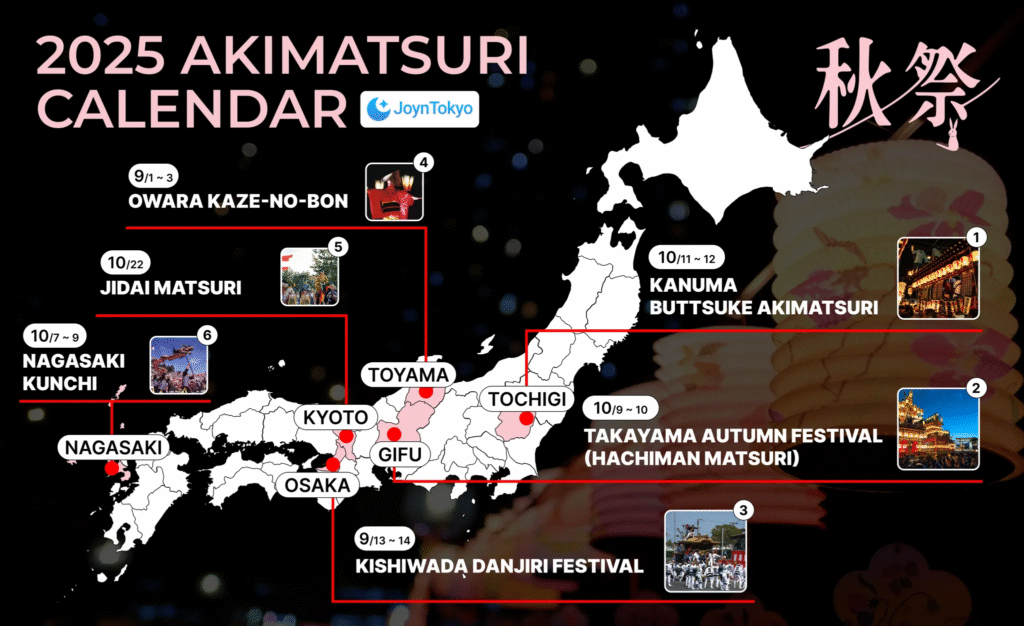
Akimatsuri Event Calendar 2025
- Kishiwada Danjiri Festival — Kishiwada, Osaka|13–14 September
- Owara Kaze-no-Bon — Yatsuo, Toyama|1–3 September
- Takayama Autumn Festival (Hachiman Matsuri) — Takayama, Gifu|9–10 October
- Nagasaki Kunchi — Nagasaki City|7–9 October
- Kanuma Buttsuke Akimatsuri — Kanuma, Tochigi|11–12 October expected
- Jidai Matsuri — Kyoto|22 October
*Dates confirmed by each festival committee as of July 2025. Check official sites 48 hours before the event in case of typhoon-related changes.
6 Must See Akimatsuri Festivals
From ancient rituals to adrenaline-filled spectacles, these six Akimatsuri offer a unique glimpse into Japan’s diverse regional cultures. Whether you prefer serene processions or roaring taiko battles, each of these autumn festivals captures the magic of the season with unforgettable sights and sounds. Here’s a closer look at where and when to experience them in 2025.
Kishiwada Danjiri Festival — Osaka
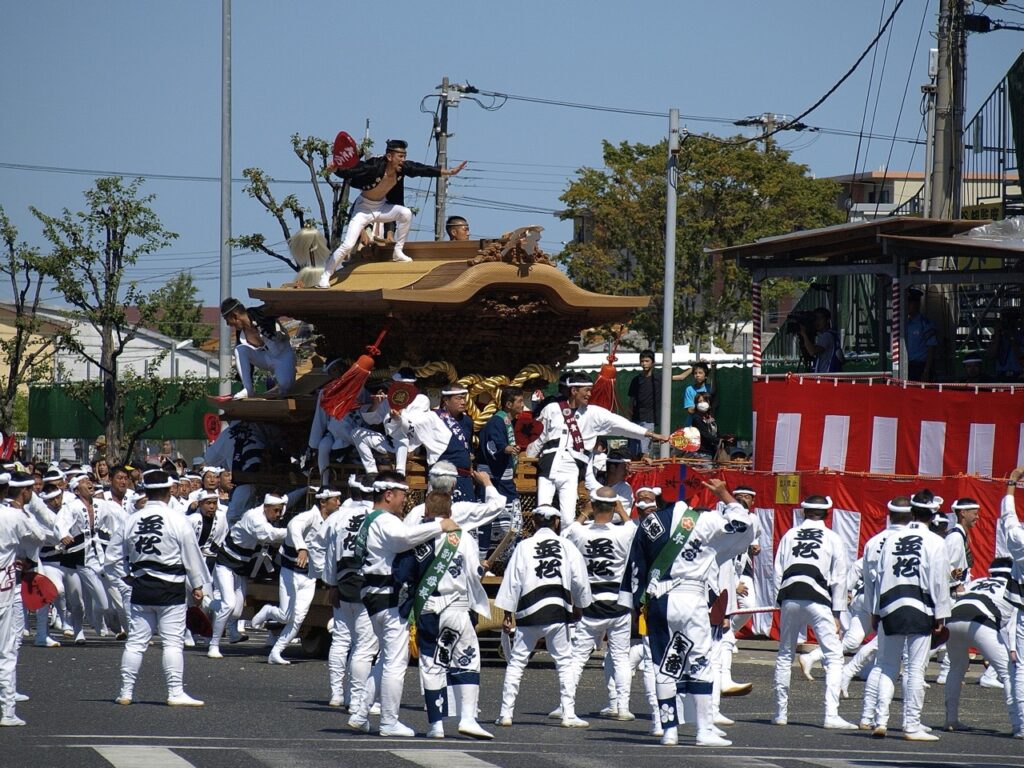
Over thirty two-tonne wooden floats hurtle through narrow streets at dawn, steered by teams of young men whose balance is just as impressive as their bravado. Spectators line up from as early as 5:00 around Kishiwada Castle for a front-row dose of adrenaline. By night, the same floats glow with lanterns: a calmer but no less dramatic sight.
- When: 13–14 September
- Official website
- Map
Owara Kaze-no-Bon — Toyama
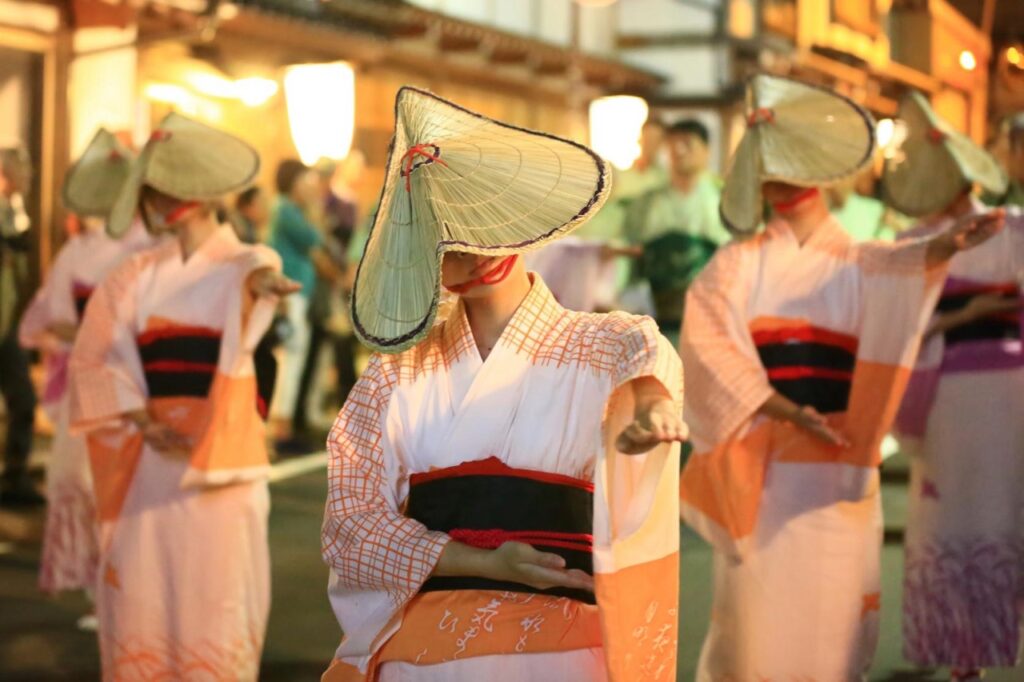
This three-night dance was created to pacify the “wind god” on the 210th day of the old agricultural calendar. Dancers in woven straw hats glide through hilly lanes to shamisen and kokyū stringed instruments, played so patiently and carefully that it feels like time pauses. Book accommodation months ahead, as ryokan rooms vanish almost as soon as reservations open.
- When: 1–3 September
- Official website
- Map
Read More
Takayama Autumn Festival — Gifu
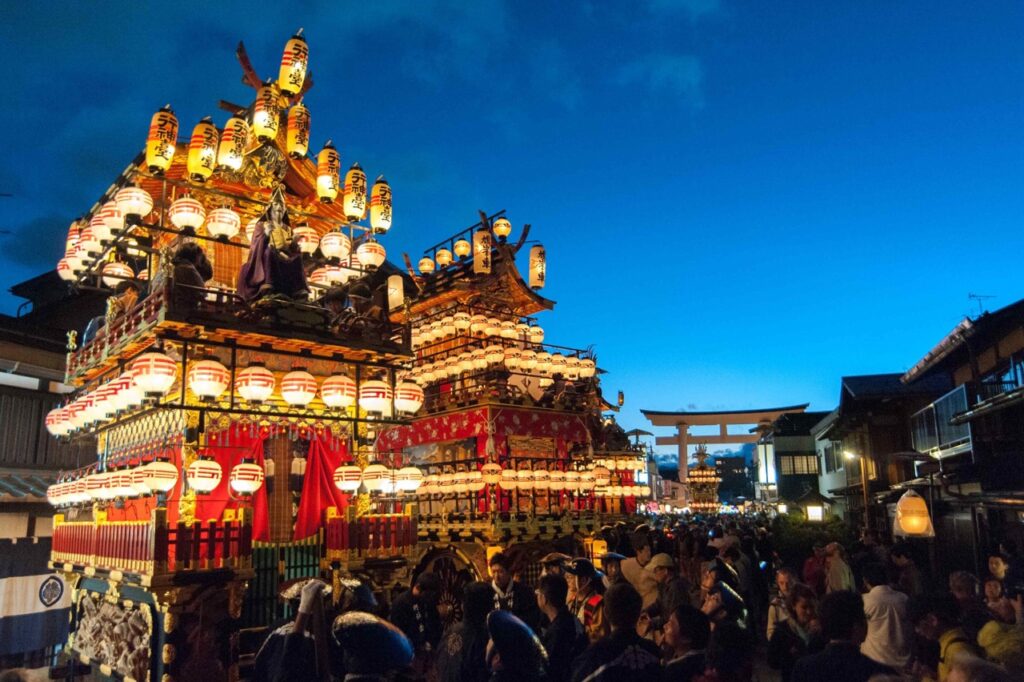
Recognised by UNESCO as part of Japan’s Intangible Cultural Heritage, Takayama’s Hachiman Matsuri showcases exquisitely carved yatai floats topped with mechanical karakuri puppets. Nightfall sees hundreds of lanterns set afloat in the canal district, and the view from Nakabashi Bridge just after sunset is pure magic.
- When: 9–10 October
- Official website
- Map
Nagasaki Kunchi — Nagasaki

Held at Suwa Shrine since the 17th century, Kunchi fuses Japanese, Dutch and Chinese elements, reflective of the city’s multicultural trading-port history. Highlights include a 15-metre dragon dance and giant ship-shaped floats that are spun around with surprising speed. Tickets for the shrine’s arena seating go on sale in early July, and sell out quickly.
- When: 7–9 October
- Official website
- Map
Kanuma Buttsuke Akimatsuri — Tochigi
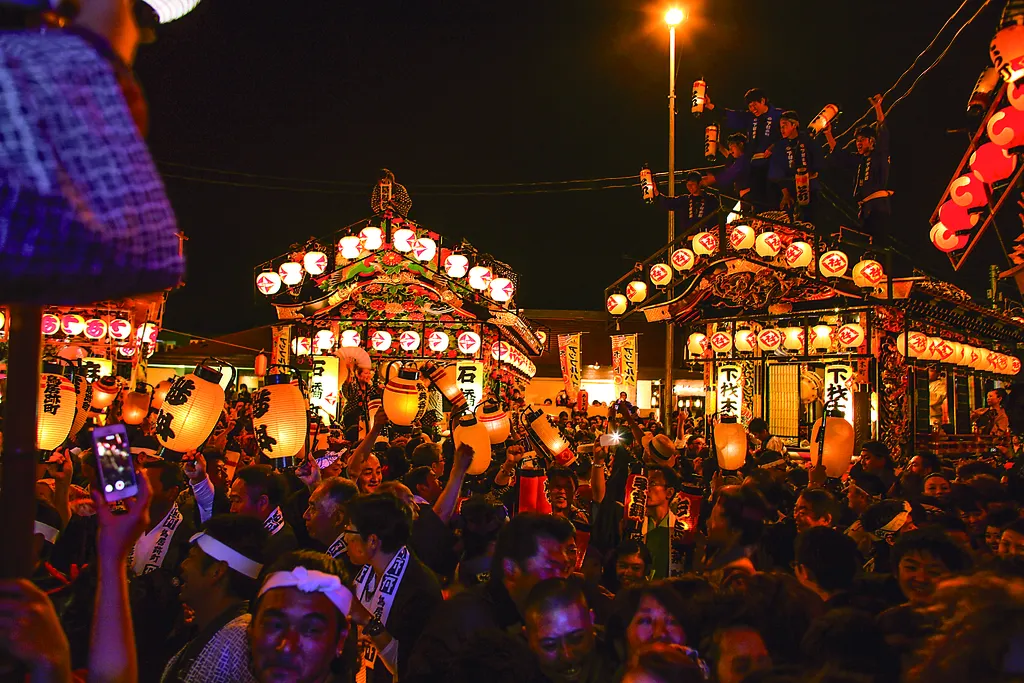
Just an hour north of Tokyo on the Tōbu Line, Kanuma offers a family-friendly take on float culture. Elaborately carved wooden yatai collide head-on in a good-natured but thunderous buttsuke music competition, accompanied by relentless taiko. The cedar-lined pathways create a rural backdrop that contrasts sharply with Tokyo’s neon streets.
- When: 11–12 October
- Official website
- Map
Jidai Matsuri — Kyoto
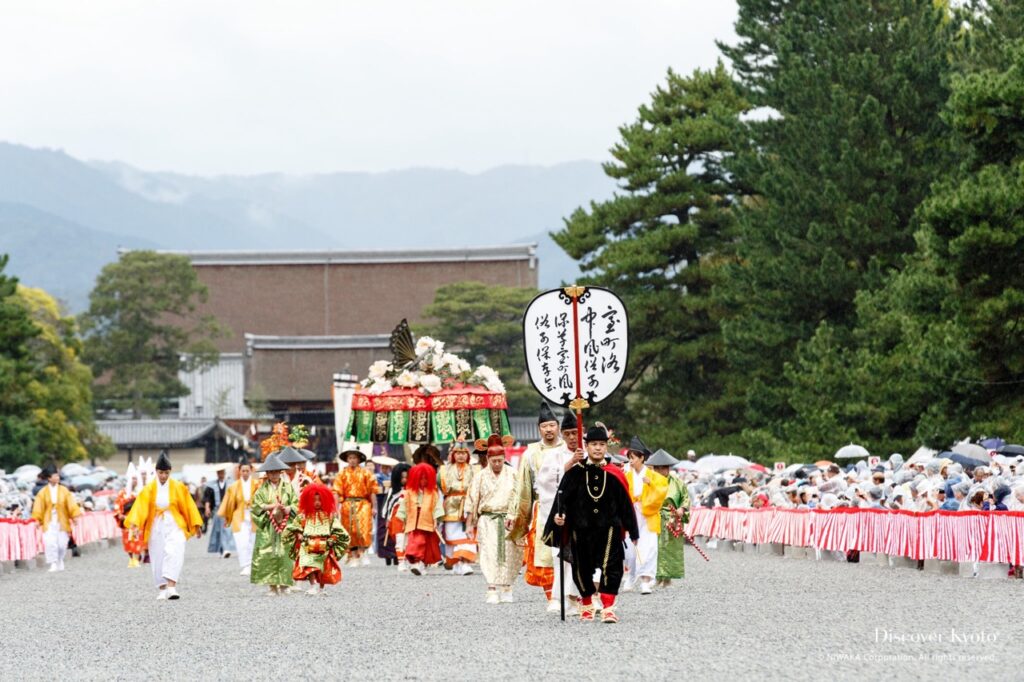
Kyoto’s “Festival of the Ages” depicts the history of Japan: 2,000 costumed participants march in chronological order from the Heian period to the Meiji Restoration. The procession leaves the Imperial Palace at noon and reaches Heian Shrine by mid-afternoon. Should rain intervene, the ceremony shifts to the next day, 23 October.
- When: 22 October
- Official website
- Map
Why Akimatsuri Deserve a Spot on Your Itinerary
Autumn festivals began as Shinto rites of gratitude for a good rice harvest. Today, they blend sacred ritual with neighbourhood showmanship, where portable shrines, taiko drums, sake, and delicious street food combine with tourist-friendly touches, such as multilingual signs and reserved seating. Cooler weather means you can linger after sunset without the sticky heat of the summer, and paper lanterns make your local townscapes look like living ukiyo-e prints.
Practical Tips for First-Time Festival-Goers
Arrive Early: Get to mid-sized festivals at least one hour in advance, and allow two hours for large events like Kishiwada or Takayama.
Dress for the Weather: Evenings can cool down quickly after sunset, so bring a light jacket to stay comfortable.
Cash and Snacks: Keep small change on hand for food stalls serving local treats like roasted sweet potatoes, oden and hot amazake.
Transport Tips: Rural lines add extra trains during festivals, but many stop running before midnight, so check the schedule.
Etiquette Matters: Listen to steward instructions, avoid using flash during performances and take your rubbish back with you — these are community gatherings, not tourist shows.
Akimatsuri blend centuries-old harvest rituals with today’s street energy, offering travellers a rare window into regional Japan at its most comfortable time of year. Plan ahead, travel light and respect local customs, and you will discover why an autumn festival — whether Osaka’s break-neck danjiri or Toyama’s hypnotic night dance — often becomes the highlight of your Japan stay.

